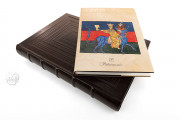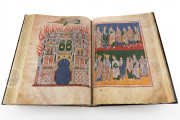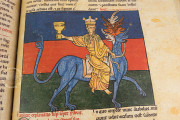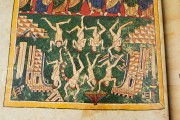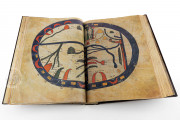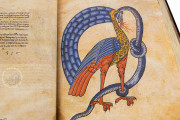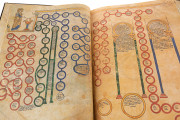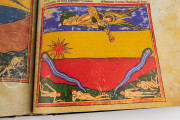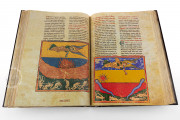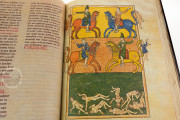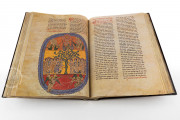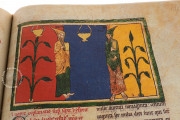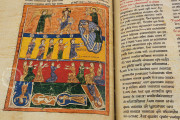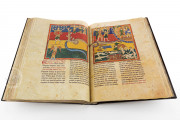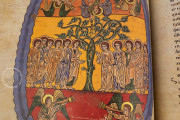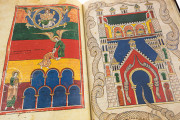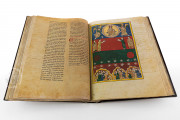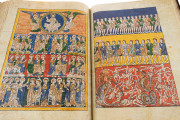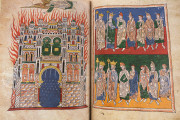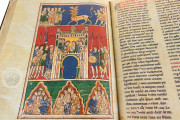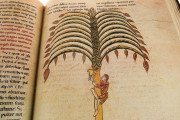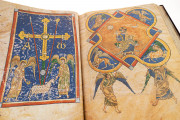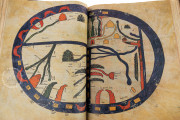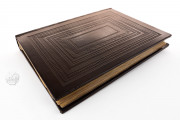The renowned tradition of medieval manuscripts featuring the Commentary on the Book of Revelation by the Asturian monk Beatus of Liébana counts more than thirty exemplars. Due to its completeness, the codex of Beatus preserved at the John Rylands Library in Manchester stands out among the Beatus exemplars. The manuscript is also remarkable as it is one of the most extensive and best-preserved copies of the Commentary by Beatus.
The Making of the Manuscript
Written in a script that shares characteristics with the Caroline and the Gothic, the manuscript is datable to the second half of the twelfth century, probably around the year 1175. The origin of the codex is not documented, but it is almost certain that it was copied in Castile, for it seems it was used as a model for the Cardeña Beatus (Museo Arqueológico Nacional, Madrid, MS 2).
Since the Cardeña Beatus was probably made in the monastery of San Pedro de Cardeña, outside Burgos, the Ryland Beatus may have been produced in the same scriptorium.
A Rich Iconography in Bright Colors
The Beatus at the Ryland Library contains 123 full-page miniatures painted in a colorful Romanesque style with embellishments in gold. The codex features highly detailed representations of the scenes described in the Book of Revelation.
Along with the traditional miniatures included in the Beatus manuscripts, such as the Map of the World, the Angels playing the Trumpets, and the Adoration of the Lamb, the illuminator of the Manchester Beatus focused on themes quite new for the Beatus.
One of the original scenes is the Ark of Noah, which is painted as an architecture filled with couples of animals framed by what seem to be small square windows. The illuminator enhanced the salvific role of the Revelation and the theme of the spiritual battle by representing scenes of war and siege along with fighting animals, an instance of this being the full-page miniature of the bird killing the serpent.
A Long Travel through Different Countries
In the nineteenth century, the manuscript passed from Spain to France and was then auctioned in Paris with other codices from the collection of the Marquis of Astorga and Count of Altamira. In 1901, the codex finally entered the John Ryland Library collection in Manchester.
_____
For more information on the Beatus model, read our blog article by Amy R. Miller (PhD, Medieval Art History, University of Toronto).
We have 1 facsimile edition of the manuscript "Beatus of Liébana - Manchester Codex": Beato de Liébana, Códice de Manchester facsimile edition, published by Patrimonio Ediciones, 2001
Request Info / Price

